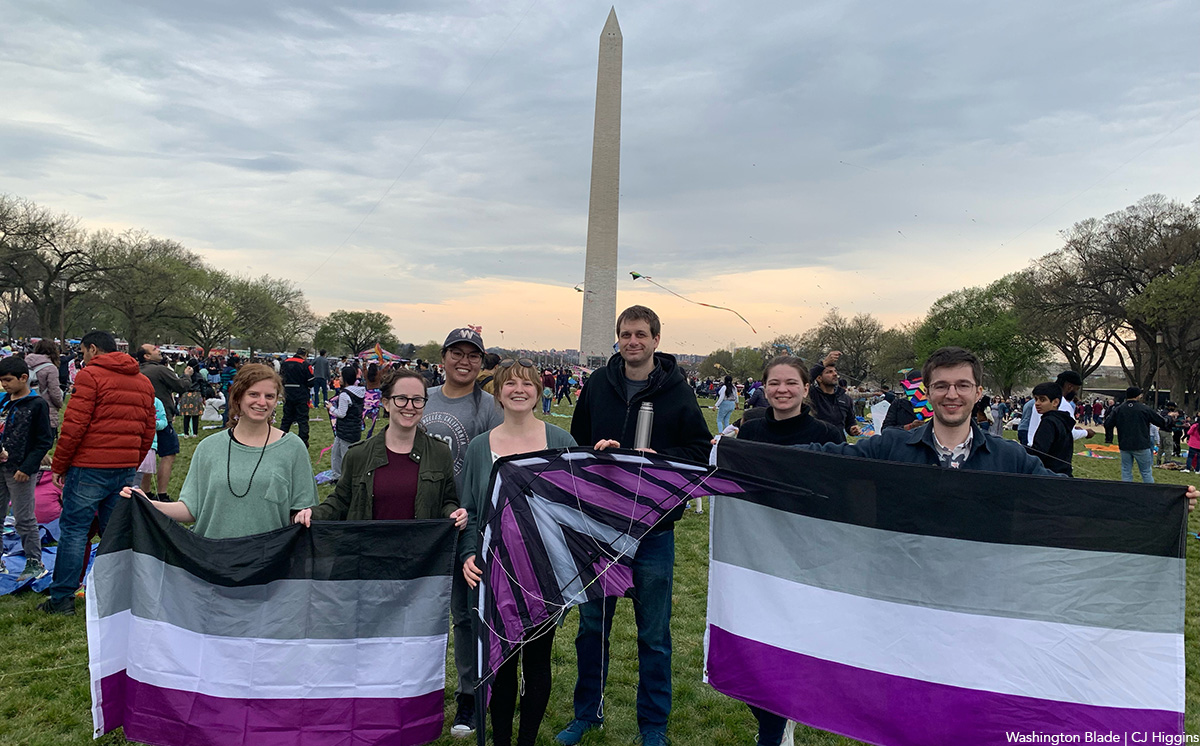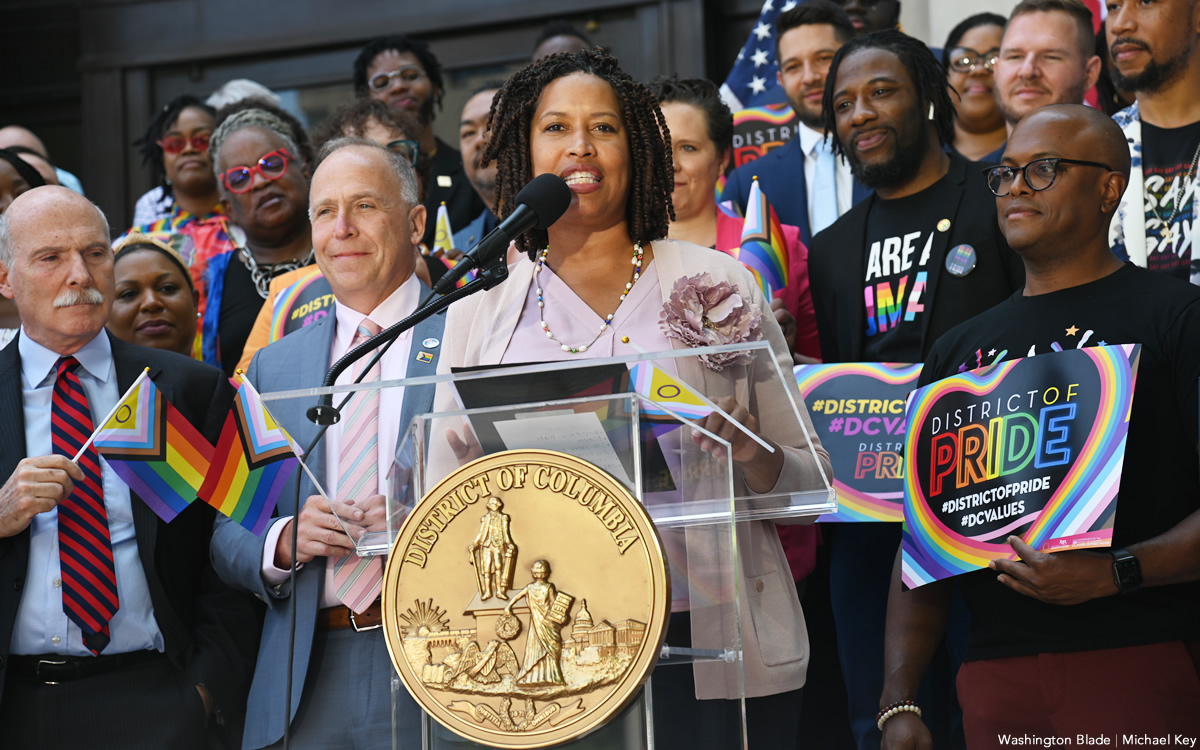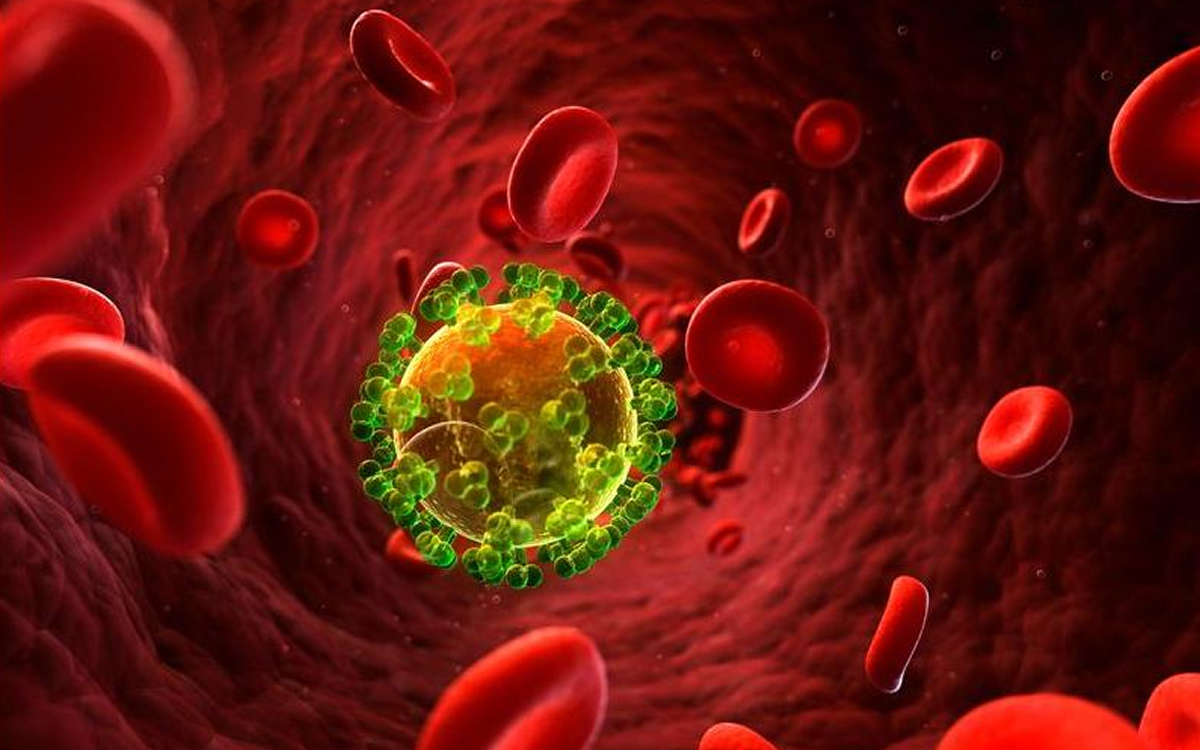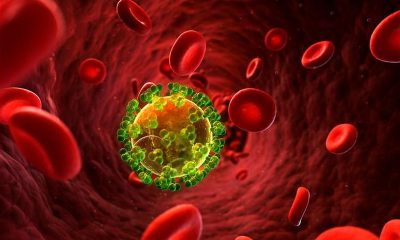Local
Mormons working to overturn Md. marriage law
Church denies direct role, but leaked email details efforts
Members of the Mormon Church in Maryland are working to overturn the state’s recently passed marriage equality law, according to an email obtained by the Washington Blade.
In the message dated March 29 sent to D.C. and Southern Maryland-area church members, the writer states that a coalition of inter-denominational Maryland churches has joined to place a referendum before voters in November on the marriage law before it goes into effect.
“We need to collect approximately 200,000 signatures by the end of May,” the email states. “We are looking for people to gather signatures within the LDS community.”
LDS refers to the church’s formal name, the Church of Jesus Christ of Latter-day Saints. Those involved with the effort have told the Blade the message isn’t an official message from church leadership either at the local level or from its headquarters in Salt Lake City, but is rather part of a local ad hoc effort to challenge Maryland’s marriage law.
The email says the “important effort” is being led by Martha Schaerr, an LDS member who’s organizing signature collection within Montgomery County and within the church. Another named organizer in the email is Teressa Wallace.
An informed source said the email was sent to the entire congregation in D.C. and Southern Maryland, which consists of between 500 and 1,500 church members and former members. According to the source, the author is Wallace, one of the named organizers in the email and wife of one of the junior pastors of the congregation.
Only 55,736 valid signatures are needed to force a ballot measure in Maryland. The stated goal of obtaining 200,000 signatures is likely an attempt to over deliver in case the validity of some signatures is challenged.
According to the email, church members interested in organizing training sessions are required to attend a 30-minute training session, “due to the stringent Maryland laws concerning referendums.”
“There will be several training sessions offered, but if transportation to them is a problem for you, a trainer would be happy to meet with you at a more convenient time and location,” the email states.
The email says the Mormon Church is “neutral on matters of party politics,” but asks that members take an active role in civic duties.
“The Church does encourage its members to play a role as responsible citizens, including becoming informed about issues and voting in elections, and becoming engaged in the political process in an informed and civil manner,” the email states. “Please consider helping with this very important effort. Every signature is important and every little bit helps!”
In an email to the Blade, Schaerr said she’s organizing against the Maryland marriage law not out of any guidance or pressure from the church, but on her own accord.
“My understanding of the religious principles taught by the Church of Jesus Christ of Latter-day Saints in ‘The Proclamation on the Family,’ the scriptures and numerous statements by church leaders has informed my conscience, and I am seeking to follow my conscience,” the email states.
Schaerr also expressed concern that the same-sex marriage law in Maryland would stifle those who want to speak out against homosexuality.
“I believe the Maryland law extends beyond providing rights to gay couples and actually seeks to silence religious objections to same sex relationships by changing the definition of marriage,” she said.
A history of anti-gay politics
The LDS member named in the email as leading the effort, Schaerr, who failed in her bid to win a seat in 2010 on the Montgomery County School Board, isn’t a stranger to anti-gay activism.
In 2007, Schaerr was reportedly a board member of the Fairfax, Va.-based Family Leader Network, an organization that — along with Citizens for a Responsible Curriculum and Parents & Friends of Ex-Gays and Gays — led the effort against a Montgomery County law instituting lessons for 8th through 10th grade students on safe-sex practices that included gays.
According to the Gazette, Schaerr downplayed her involvement in the lawsuit against the curriculum while pursuing a seat on the school board two years ago, reportedly saying other board members wouldn’t support efforts to change the curriculum.
In an op-ed submitted to the Washington Post at the time she was running for the seat, Schaerr disputed the notion she’s anti-gay. However, she said she disagreed that schools should teach homosexuality is “inevitably innate” because she said there are other views to the contrary — even though those views are disputed by major medical and psychiatric professional associations.
“If we’re going to talk about anal sex in a health class or a condom video, it’s irresponsible not to warn students — especially gay students — about the medical evidence showing the heightened health risks of anal sex compared with vaginal sex, even with a condom,” Schaerr said.
Wallace, the other named person in the email, was also involved in the fight against the curriculum. According to an LDS publication called Meridian Magazine, Wallace objected to the gay-inclusive Montgomery County sex ed curriculum, and attended a school board meeting while holding a sign expressing her opinion. The article is no longer on the magazine’s website, but has been reposted on a Mormon online forum.
Carrie Evans, executive director of Equality Maryland, said she isn’t surprised that Mormon Church officials are playing a role in the effort to rescind the Maryland marriage law, but doesn’t think the LDS Church is the lead organization in the effort.
“We were not aware of this email, however the Mormon Church has been very vocal in its opposition to marriage equality so it is not surprising,” Evans said. “We have no reason to believe they are taking a lead role in efforts to overturn the Civil Marriage Protection Act in Maryland.”
Church disavows involvement
The Mormon Church is disavowing any involvement in the organizational effort proposed in the email.
Dale Jones, an LDS spokesperson, said the church has no direct involvement in the effort to overturn the marriage law in Maryland.
“While the Church’s position in support of traditional marriage is well established, the effort in Maryland is not being organized through the Church’s headquarters in Salt Lake City,” Jones said. “Members, of course, will make their own decisions regarding their involvement in local issues.”
But the message recalls the Mormon Church’s lead role in passage of Proposition 8 in California in 2008. The First Presidency of the Church, or its governing body, publicly backed the initiative and reportedly encouraged members during church services to take an active role in contributing money and get-out-the-vote efforts to support the ban’s passage.
According to the New York Times, Protect Marriage, the organization responsible for Prop 8, estimates that nearly half of the $40 million in donations to the initiative came from LDS members and made up 80 to 90 percent of the volunteers who walked door-to-door in election precincts.
The Mormon Church has maintained that its direct involvement with the initiative was minimal — its total contributions amounted to nearly $190,000 — and church members were supporting Prop 8 on their own accord.
The Mormon involvement in Prop 8 was largely seen as public relations setback for the church in terms of public perception.
An LGBT rights supporter, who spoke on condition of anonymity, said he’s spoken to senior church leaders and was told they want no involvement in future initiatives on marriage.
In January, a statement affirming marriage should remain between one man, one woman was reportedly read to Mormons in Minnesota as the state prepares to vote on a marriage amendment this fall. But according to Affirmation, a gay Mormon group, the statement was also read on an ad hoc basis and not under direction from church leadership.
Moreover, with former Massachusetts Gov. Mitt Romney — a Mormon — looking like he’ll be the GOP presidential nominee, many suspect the church doesn’t want to take an active role in politics to avoid the perception that Mormon officials will tell Romney how to govern if he’s elected.
Randall Thacker, senior vice president for Affirmation, said his group intends to oppose efforts within the church against same-sex marriage — whether they’re part of a church effort or an ad hoc initiative.
“Our main stance is that we’re very, of course, pro-marriage [equality],” Thacker said. “We will take a stand wherever we have to, including even ad hoc groups, but we typically are more focused on directing and confronting the church when it acts officially.”
The email comes just weeks before the Open Stories Foundation conference is set for LGBT Mormons in Washington, D.C., called “Building Bridges of Understanding,” from April 20 to 22. Guest speakers will include Carol Lynn Pearson, an author who writes about gays in the Mormon Church, and Mitch Mayne, a gay Mormon who serves as the executive secretary in his congregation.
The full text of the email message follows:
Attention Registered Voters who are Residents of Maryland:
As you have probably heard, the Maryland legislature passed a same sex marriage bill last February. A coalition of inter-denominational churches throughout Maryland has joined together to try to get a referendum on the November ballot that would allow the residents of Maryland to vote on this bill before it becomes law. Martha Schaerr, who is a member of the LDS Church, is organizing signature collection within Montgomery County and within the LDS Church.
We need to collect approximately 200,000 signatures by the end of May. We are looking for people to gather signatures within the LDS community. If you are willing to help with this important effort please contact Martha Schaerr as soon as possible at [email protected] or Teressa Wallace at [email protected].
If you would like to volunteer, you must attend a 30 minute training session due to the stringent Maryland laws concerning referendums. To register for a session please contact us as soon as possible. There will be several training sessions offered, but if transportation to them is a problem for you, a trainer would be happy to meet with you at a more convenient time and location.
The LDS Church is neutral of matters of party politics. The Church does encourage its members to play a role as responsible citizens, including becoming informed about issues and voting in elections, and becoming engaged in the political process in an informed and civil manner. Please consider helping with this very important effort. Every signature is important and every little bit helps!
District of Columbia
Catching up with the asexuals and aromantics of D.C.
Exploring identity and finding community

There was enough commotion in the sky at the Blossom Kite Festival that bees might have been pollinating the Washington Monument. I despaired of quickly finding the Asexuals and Aromantics of the Mid-Atlantic—I couldn’t make out a single asexual flag among the kites up above. I thought to myself that if it had been the Homosexuals of the Mid-Atlantic I would’ve had my gaydar to rely on. Was there even such a thing as ace-dar?
As it turned out, the asexual kite the group had meant to fly was a little too pesky to pilot. “Have you ever used a stunt kite?” Bonnie, the event organizer asked me. “I bought one. It looked really cool. But I can’t make it work.” She sighed. “I can’t get the thing six feet off the ground.” The group hardly seemed to care. There was caramel popcorn and cookies, board games and head massages, a game of charades with more than its fair share of Pokémon. The kites up above might as well have been a coincidental sideshow. Nearly two dozen folks filtered in and out of the picnic throughout the course of the day.
But I counted myself lucky that Bonnie picked me out of the crowd. If there’s such a thing as ace-dar, it eludes asexuals too. The online forum for all matters asexual, AVEN, or the Asexual Visibility and Education Network, is filled with laments: “I don’t think it’s possible.” “Dude, I wish I had an ace-dar.” “If it exists, I don’t have it.” “I think this is just like a broken clock is right twice a day type thing.” What seems to be a more common experience is meeting someone you just click with—only to find out later that they’re asexual. A few of the folks I met described how close childhood friends of theirs likewise came out in adulthood, a phenomenon that will be familiar to many queer people. But it is all the more astounding for asexuals to find each other this way, given that asexual people constitute 1.7% of sexual minorities in America, and so merely .1% of the population at large.
To help other asexuals identify you out in the world, some folks wear a black ring on their middle finger, much as an earring on the right ear used to signify homosexuality in a less welcoming era. The only problem? The swinger community—with its definite non-asexuality—has also adopted the signal. “It’s still a thing,” said Emily Karp. “So some people wear their ace rings just to the ace meet-ups.” Karp has been the primary coordinator for the Asexuals and Aromantics of the Mid-Atlantic (AAMA) since 2021, and a member of the meet-up for a decade. She clicked with the group immediately. After showing up for a Fourth of July potluck in the mid-afternoon, she ended up staying past midnight. “We played Cards against Humanity, which was a very, very fun thing to do. It’s funny in a way that’s different than if we were playing with people that weren’t ace. Some of the cards are implying, like, the person would be motivated by sex in a way that’s absurd, because we know they aren’t.”
Where so many social organizations withered during the pandemic, the AAMA flourished. Today, it boasts almost 2,000 members on meetup.com. Karp hypothesized that all the social isolation gave people copious time to reflect on themselves, and that the ease of meeting up online made it convenient as a way for people to explore their sexual identity and find community. Online events continue to make up about a third of the group’s meet-ups. The format allows people to participate who live farther out from D.C. And it allows people to participate at their preferred level of comfort: while many people participate much as they would at an in-person event, some prefer to watch anonymously, video feed off. Others prefer to participate in the chat box, though not in spoken conversation.
A recent online event was organized for a discussion of Rhaina Cohen’s book, “The Other Significant Others,” published in February. Cohen’s book discusses friendship as an alternative model for “significant others,” apart from the romantic model that is presupposed to be both the center and goal of people’s lives. The AAMA group received the book with enthusiasm. “It literally re-wired my brain,” as one person put it. People discussed the importance of friendship to their lives, and their difficulties in a world that de-prioritized friendship. “I can break up with a friend over text, and we don’t owe each other a conversation,” one said. But there was some disagreement when it came to the book’s discussion of romantic relationships. “It relegates ace relationships to the ‘friend’ or ‘platonic’ category, to the normie-reader,” one person wrote in the chat. “Our whole ace point is that we can have equivalent life relationships to allo people, simply without sex.” (“Allo” is shorthand for allosexual or alloromantic, people who do experience sexual or romantic attraction.)
The folks of the AAMA do not share a consensus on the importance of romantic relationships to their lives. Some asexuals identify as aromantic, some don’t. And some aromantics don’t identify as asexual, either. The “Aromantic” in the title of the group is a relatively recent addition. In 2017, the group underwent a number of big changes. The group was marching for the first time in D.C. Pride, participating in the LGBTQ Creating Change conference, and developing a separate advocacy and activism arm. Moreover, the group had become large enough that discussions were opened up into forming separate chapters for D.C., Central Virginia, and Baltimore. During those discussions, the group leadership realized that aromantic people who also identified as allosexual didn’t really have a space to call their own. “We were thinking it would be good to probably change the name of the Meetup group,” Emily said. “But we were not 100% sure. Because [there were] like 1,000 people in the group, and they’re all aces, and it’s like, ‘Do you really want to add a non-ace person?’” The group leadership decided to err on the side of inclusion. “You know, being less gatekeep-y was better. It gave them a place to go — because there was nowhere else to go.”
The DC LGBT Center now sponsors a support group for both asexuals and aromantics, but it was formed just a short while ago, in 2022. The founder of the group originally sought out the center’s bisexual support group, since they didn’t have any resources for ace folks. “The organizer said, you know what, why don’t we just start an ace/aro group? Like, why don’t we just do it?” He laughed. “I was impressed with the turnout, the first call. It’s almost like we tapped into, like, a dam. You poke a hole in the dam, and the water just rushes out.” The group has a great deal of overlap with the AAMA, but it is often a person’s first point of contact with the asexual and aromantic community in D.C., especially since the group focuses on exploring what it means to be asexual. Someone new shows up at almost every meeting. “And I’m so grateful that I did,” one member said. “I kind of showed up and just trauma dumped, and everyone was really supportive.”
Since the ace and aro community is so small, even within the broader queer community, ace and aro folks often go unrecognized. To the chagrin of many, the White House will write up fact sheets about the LGBTQI+ community, which is odd, given that when the “I” is added to the acronym, the “A” is usually added too. OKCupid has 22 genders and 12 orientations on its dating website, but “aromantic” is not one of them — presumably because aromantic people don’t want anything out of dating. And since asexuality and aromanticism are defined by the absence of things, it can seem to others like ace and aro people are ‘missing something.’ One member of the LGBT center support group had an interesting response. “The space is filled by… whatever else!” they said. “We’re not doing a relationship ‘without that thing.’ We’re doing a full scale relationship — as it makes sense to us.”
CJ Higgins is a postdoctoral fellow with the Alexander Grass Humanities Institute at Johns Hopkins University.
District of Columbia
Bowser budget proposal calls for $5.25 million for 2025 World Pride
AIDS office among agencies facing cuts due to revenue shortfall

D.C. Mayor Muriel Bowser’s proposed fiscal year 2025 budget includes a request for $5.25 million in funding to support the June 2025 World Pride celebration, which D.C. will host, and which is expected to bring three million or more visitors to the city.
The mayor’s proposed budget, which she presented to the D.C. Council for approval earlier this month, also calls for a 7.6 percent increase in funding for the Mayor’s Office of LGBTQ Affairs, which amounts to an increase of $132,000 and would bring the office’s total funding to $1.7 million. The office, among other things, provides grants to local organizations that provide services to the LGBTQ community.
Among the other LGBTQ-related funding requests in the mayor’s proposed budget is a call to continue the annual funding of $600,000 to provide workforce development services for transgender and gender non-conforming city residents “experiencing homelessness and housing instability.” The budget proposal also calls for a separate allocation of $600,000 in new funding to support a new Advanced Technical Center at the Whitman-Walker Health’s Max Robinson Center in Ward 8.
Among the city agencies facing funding cuts under the mayor’s proposed budget is the HIV/AIDS, Hepatitis, Sexually Transmitted Disease, and Tuberculosis Administration, known as HAHSTA, which is an arm of the D.C. Department of Health. LGBTQ and AIDS activists have said HAHSTA plays an important role in the city’s HIV prevention and support services. Observers familiar with the agency have said it recently lost federal funding, which the city would have to decide whether to replace.
“We weren’t able to cover the loss of federal funds for HAHSTA with local funds,” Japer Bowles, director of the Mayor’s Office of LGBTQ Affairs, told the Washington Blade. “But we are working with partners to identify resources to fill those funding gaps,” Bowles said.
The total proposed budget of $21 billion that Bowser submitted to the D.C. Council includes about $500 million in proposed cuts in various city programs that the mayor said was needed to offset a projected $700 million loss in revenue due, among other things, to an end in pandemic era federal funding and commercial office vacancies also brought about by the post pandemic commercial property and office changes.
Bowser’s budget proposal also includes some tax increases limited to sales and business-related taxes, including an additional fee on hotel bookings to offset the expected revenue losses. The mayor said she chose not to propose an increase in income tax or property taxes.
Earlier this year, the D.C. LGBTQ+ Budget Coalition, which consists of several local LGBTQ advocacy organizations, submitted its own fiscal year 2025 budget proposal to both Bowser and the D.C. Council. In a 14-page letter the coalition outlined in detail a wide range of funding proposals, including housing support for LGBTQ youth and LGBTQ seniors; support for LGBTQ youth homeless services; workforce and employment services for transgender and gender non-conforming residents; and harm reduction centers to address the rise in drug overdose deaths.
Another one of the coalition’s proposals is $1.5 million in city funding for the completion of the D.C. Center for the LGBTQ Community’s new building, a former warehouse building in the city’s Shaw neighborhood that is undergoing a build out and renovation to accommodate the LGBTQ Center’s plans to move in later this year. The coalition’s budget proposal also calls for an additional $300,000 in “recurring” city funding for the LGBTQ Center in subsequent years “to support ongoing operational costs and programmatic initiatives.”
Bowles noted that Bowser authorized and approved a $1 million grant for the LGBTQ Center’s new building last year but was unable to provide additional funding requested by the budget coalition for the LGBTQ Center for fiscal year 2025.
“We’re still in this with them,” Bowles said. “We’re still looking and working with them to identify funding.”
The total amount of funding that the LGBTQ+ Budget Coalition listed in its letter to the mayor and Council associated with its requests for specific LGBTQ programs comes to $43.1 million.
Heidi Ellis, who serves as coordinator of the coalition, said the coalition succeeded in getting some of its proposals included in the mayor’s budget but couldn’t immediately provide specific amounts.
“There are a couple of areas I would argue we had wins,” Ellis told the Blade. “We were able to maintain funding across different housing services, specifically around youth services that affect folks like SMYAL and Wanda Alston.” She was referring to the LGBTQ youth services group SMYAL and the LGBTQ organization Wanda Alston Foundation, which provides housing for homeless LGBTQ youth.
“We were also able to secure funding for the transgender, gender non-conforming workforce program,” she said. “We also had funding for migrant services that we’ve been advocating for and some wins on language access,” said Ellis, referring to programs assisting LGBTQ people and others who are immigrants and aren’t fluent in speaking English.
Ellis said that although the coalition’s letter sent to the mayor and Council had funding proposals that totaled $43.1 million, she said the coalition used those numbers as examples for programs and policies that it believes would be highly beneficial to those in the LGBTQ community in need.
“I would say to distill it down to just we ask for $43 million or whatever, that’s not an accurate picture of what we’re asking for,” she said. “We’re asking for major investments around a few areas – housing, healthcare, language access. And for capital investments to make sure the D.C. Center can open,” she said. “It’s not like a narrative about the dollar amounts. It’s more like where we’re trying to go.”
The Blade couldn’t’ immediately determine how much of the coalition’s funding proposals are included in the Bowser budget. The mayor’s press secretary, Daniel Gleick, told the Blade in an email that those funding levels may not have been determined by city agencies.
“As for specific funding levels for programs that may impact the LGBTQ community, such as individual health programs through the Department of Health, it is too soon in the budget process to determine potential adjustments on individual programs run though city agencies,” Gleick said.
But Bowles said several of the programs funded in the mayor’s budget proposal that are not LGBTQ specific will be supportive of LGBTQ programs. Among them, he said, is the budget’s proposal for an increase of $350,000 in funding for senior villages operated by local nonprofit organizations that help support seniors. Asked if that type of program could help LGBTQ seniors, Bowles said, “Absolutely – that’s definitely a vehicle for LGBTQ senior services.”
He said among the programs the increased funding for the mayor’s LGBTQ Affairs office will support is its ongoing cultural competency training for D.C. government employees. He said he and other office staff members conduct the trainings about LGBTQ-related issues at city departments and agencies.
Bowser herself suggested during an April 19 press conference that local businesses, including LGBTQ businesses and organizations, could benefit from a newly launched city “Pop-Up Permit Program” that greatly shortens the time it takes to open a business in vacant storefront buildings in the downtown area.
Bowser and Nina Albert, D.C. Deputy Mayor for Planning and Economic Development, suggested the new expedited city program for approving permits to open shops and small businesses in vacant storefront spaces could come into play next year when D.C. hosts World Pride, one of the word’s largest LGBTQ events.
“While we know that all special events are important, there is an especially big one coming to Washington, D.C. next year,” Bowser said at the press conference. “And to that point, we proposed a $5.25 million investment to support World Pride 2025,” she said, adding, “It’s going to be pretty great. And so, we’re already thinking about how we can include D.C. entrepreneurs, how we’re going to include artists, how we’re going to celebrate across all eight wards of our city as well,” she said.
Among those attending the press conference were officials of D.C.’s Capital Pride Alliance, which will play a lead role in organizing World Pride 2025 events.
Maryland
Health care for Marylanders with HIV is facing huge cuts this summer
Providers poised to lose three-quarters of funding

BY MEREDITH COHN | By the end of June, health care providers in Maryland will lose nearly three-quarters of the funding they use to find and treat thousands of people with HIV.
Advocates and providers say they had been warned there would be less money by the Maryland Department of Health, but were stunned at the size of the drop — from about $17.9 million this fiscal year to $5.3 million the next. The deep cuts are less than three months away.
The rest of this article can be read on the Baltimore Banner’s website.
-

 State Department3 days ago
State Department3 days agoState Department releases annual human rights report
-

 Maryland5 days ago
Maryland5 days agoJoe Vogel campaign holds ‘Big Gay Canvass Kickoff’
-

 District of Columbia1 day ago
District of Columbia1 day agoCatching up with the asexuals and aromantics of D.C.
-

 Politics4 days ago
Politics4 days agoSmithsonian staff concerned about future of LGBTQ programming amid GOP scrutiny











